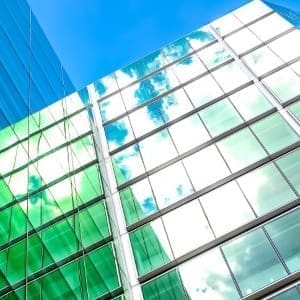 The recent surge in COVID-19 infections has dampened expectations for U.S. hotel performance through the first half of 2021, but news of effective vaccines has bolstered projections of U.S. lodging industry recovery beginning in earnest during the second half of next year, according to CBRE‘s latest hotel forecast.
The recent surge in COVID-19 infections has dampened expectations for U.S. hotel performance through the first half of 2021, but news of effective vaccines has bolstered projections of U.S. lodging industry recovery beginning in earnest during the second half of next year, according to CBRE‘s latest hotel forecast.
According to the recently released Q3 2020 edition of Hotel Horizons®, CBRE Hotels Research is forecasting an average national occupancy level of 44.4 percent during the first half of 2021. This measure increases to 55.7 percent during the year’s second half.
“The increased spread of the COVID-19 virus and reinstatement of government restrictions, combined with the lack of an economic stimulus package, has lowered our outlook for the performance of U.S. hotels during the remainder of 2020 and through next year’s first half,” said Bram Gallagher Ph.D., Senior Hotel Economist with CBRE Hotels Research.
CBRE’s Q3 2020 forecasts call for a return to 2019 occupancy, average daily room rates (ADR), and RevPAR levels in 2024. In general, properties that operate in the lower-priced chain-scale segments will recover to 2019 performance levels sooner than the higher-priced hotels. One exception is luxury hotels. While occupancy levels in this category have declined significantly during 2020, luxury still has maintained some relative stability in room rates. It appears that leisure travelers who prefer luxury accommodations continue to have the means to pay the price premium.

 The diverse impact of COVID-19 on different groups of travelers becomes evident when analyzing changes in lodging demand by chain scale:
The diverse impact of COVID-19 on different groups of travelers becomes evident when analyzing changes in lodging demand by chain scale:
- Luxury and upper-upscale properties are most dependent on businesspeople and conventioneers and will see their demand levels decline in excess of 60 percent in 2020.
- Conversely, hotels operating in the economy and midscale segments will see their business fall off by less than 25 percent.
“The confidence provided by an effective vaccine will serve to sustain the relatively strong leisure travel patterns observed during the summer of 2020, plus initiate a significant return of corporate travelers during the second half of 2021. Group demand, on the other hand, will lag in recovery because of the advance-booking nature of this segment,” Gallagher said.
The prospects for improvement in ADR during 2021 are influenced by these demand patterns. Overall, CBRE is forecasting a 1.3 percent decline in ADR for U.S. hotels during 2021 and annual increases in ADR for each of the three lower-priced chain scales, but continued declines in ADR for the higher-priced segments.
Construction Activity
Further bolstering pricing power for U.S. hoteliers is a deceleration in new hotel construction activity. CBRE forecasts U.S. hotel supply to increase by 1.8 percent in 2020, and another 1.4 percent in 2021. However, net supply gains are projected to dip below 1 percent in 2022, thus lowering the impact of new competition concurrent with the recovery in lodging demand.
While revenue recovery may occur in 2024, some hotels may see their profits return to 2019 levels earlier, as US hotel operators have enacted effective cost control measures in 2020 to offset the severe declines in revenue, and will likely keep them in place for the foreseeable future.
The Q3 2020 edition of Hotel Horizons® for the U.S. lodging industry and 65 major markets can be purchased by visiting: https://pip.cbrehotels.com.


















